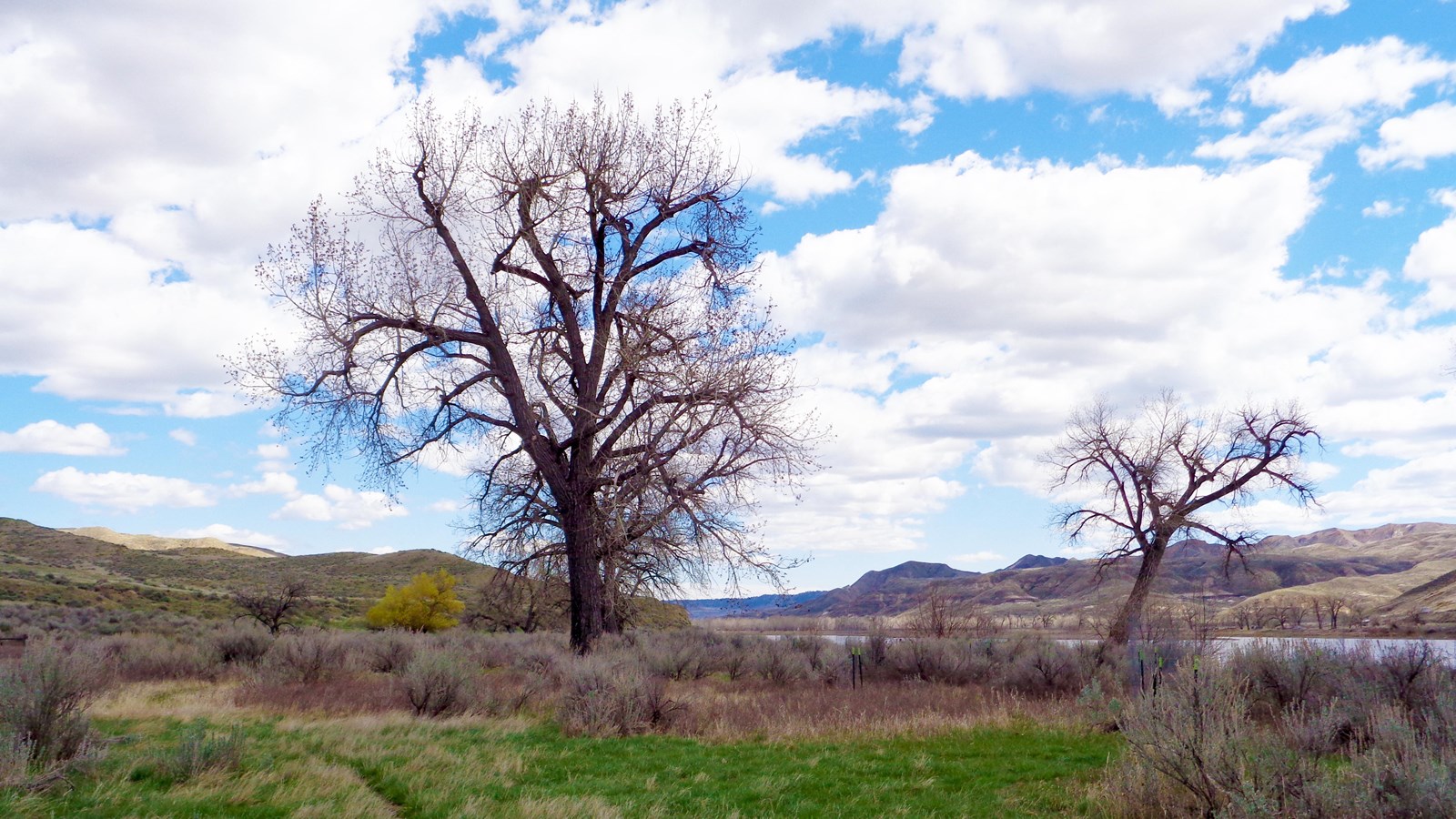Last updated: November 27, 2020
Place
Slaughter River

Lewis and Clark NHT Visitor Centers and Museums
Lewis and Clark Camp at Slaughter River is a High Potential Historic Site on the Lewis and Clark National Historic Trail.
On May 29, 1805, Lewis wrote that “today we passed on the Stard. side the remains of a vast many mangled carcases of Buffalow which had been driven over a precipice of 120 feet by the Indians and perished; the water appeared to have washed away a part of this immence pile of slaughter and still their remained the fragments of at least a hundred carcases they created a most horrid stench.” The expedition members believed this site, consisting of over 100 bison carcasses, was a “buffalo jump” – a traditional method among different tribes to kill large numbers of bison by herding them near a precipice and causing them to stampede off the edge. That evening, the expedition camped among a grove of cottonwoods across the river (along the north bank) and nearly a mile upstream from a tributary they named “Slaughter River.” Lewis and his detachment camped there again on July 29, 1806, during the return journey and two days after the fight at Two Medicine.
Today Lewis and Clark’s Slaughter River is known as Arrow Creek and is located within the Upper Missouri River Breaks National Monument. In 1967, the Montana Department of Fish and Game designated the site as a primitive boat access recreation area. Currently, the camp area includes a shelter and two privies. The Lewis and Clark Camp at Slaughter River is primarily publicly accessible via boat, but it can also be reached overland by a rugged two-track drive that leads from 8 Mile Bench Road. The overland route is restricted and requires access permission from the BLM.The Camp at Slaughter River was one of the few sites used by the explorers on both their outgoing and return trips.
They first camped here on May 29, 1805. They had discovered the remains of over 100 buffalo, which they assumed were killed at a buffalo jump. Indigenous peoples in the high Plains used jumps to kill buffalo before the advent of steel-tipped arrows, lances and rifle-muskets. They would draw a herd to the edge of a butte, cliff, or river gorge and then instigate a stampede that forced the buffalo over the edge. Lewis explained:
“. . . for this purpose one of the most active and fleet young men is scelected and disguised in a robe of buffaloe skin, having also the skin of the buffaloe's head with the years and horns fastened on his head in form of a cap, thus caparisoned he places himself at a convenient distance between a herd of buffaloe and a precipice proper for the purpose.the other indians now surround the herd on the back and flanks and at a signal agreed on all shew themselves at the same time moving forward towards the buffaloe; the disguised indian or decoy has taken care to place himself sufficiently nigh the buffaloe to be noticed by them when they take flight and runing before them they follow him in full speede to the precipice.the decoy in the mean time has taken care to secure himself in some cranney or crivice of the clift which he had previously prepared for that purpose. the part of the decoy I am informed is extreamely dangerous, if they are not fleet runers the buffaloe tread them under foot and crush them to death, and sometimes drive them over the precipice also, where they perish in common with the buffaloe . . .”
The Corps wrongly attributed the jump to Blackfeet members, whose two-week-old campsite was found earlier in the day. Instead, the buffalo had simply drowned in the river and piled up on the bank when the ice broke. The presence of these buffalo was the inspiration for naming the nearby creek Slaughter River (now Arrow Creek). The party arrived again at Slaughter River on July 29, 1806, just two days after Lewis's struggle with the Piegans, a Blackfoot tribe, at Two Medicine Site.
